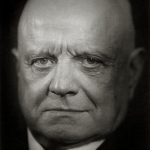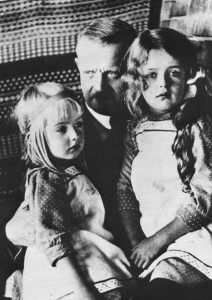Symphony No. 3 in C major Op. 52
Jean Sibelius

Completed in the latter half of 1907, the Finnish master’s Third Symphony is such a departure from the more famous Symphony No. 2 that criticism of this much more concise, smaller and shorter symphony should have been seen, from a modern-day viewpoint, as an unavoidable inevitability.
Music criticism at the turn of the 20th-Century, and especially so in countries within the epicentre of Western Europe, could be likened to modern-day literary criticism: at once avuncular, but with barbs well and truly honed to a fine point. By analogy, one might go as far as to suggest it was on many occasions akin to our perceptions of a ‘blood-sport’ with critics from reputable and other more politically motivated newspapers, journals and societies of the time alike dissecting the carcass of the latest musical offerings from the well-known composers of the day. For example, reception to new symphonies by Mahler in Vienna, or the early operas of Richard Strauss in Germany faired as poorly as the initial reception to Sibelius’ Symphony No. 3 both in his native country and abroad.
So what’s changed over the course of 111 years? Notably this most wonderful and charmingly enigmatic of symphonies has still not found a permanent place in the annual concert seasons of most orchestras. Is it hard to listen to? Of course not! Is it hard to comprehend on a surface level for an audience hearing it perhaps for the first time? I really don’t think so, but in saying that, making the composer’s inner-idea workings ‘hearable’ throws up some real challenges for conductor and musicians alike. Why do I say this?
The Symphony No. 3 has been described on more than one occasion by musicologists and concert notes writers as having characteristic traits of ‘classical’ symphonies; or (and this is erroneous) having attributes of neo-classicist works, along with suitably vague references to similarities in ethos with earlier composers such as Felix Mendelssohn amongst others. These comparisons sell Sibelius rather short in my view. Sibelius’ symphonic construction ideas are far more elusive to pin down than some would have us believe.
The challenge with Sibelius is that his febrile imagination in the transformation of his musical ideas – albeit framed within well-known formal musical structures – is easily negated by pointing too heavily toward the moments of musical arrival, as opposed to highlighting the myriad and deceptively elusive ways in which the composer designs to reach these major moments of sublime musical expression in a condensed timeframe.
In short, Sibelius is hard to pull off – but nevertheless a wonderful challenge to take on. An opportunity to both hear and play this great symphony (like all great orchestral music for that matter) is the best reason there is to attend a live-concert. It’s so deliciously dangerous to do!
So how do we try to hear what Sibelius imagined?
Sibelius musicologist, Erik Tawaststjerna, in his seminal three-volume work on the Finnish composer reminds us that Sibelius once characterized the Finale of the Third Symphony as the “the crystallization of ideas from chaos” probably meant as a reaction against what the composer saw as the relative chaos of musical ideas emanating from late romantic works musically known to him. The Seventh Symphony of Gustav Mahler (1905) would definitely have fallen into this category.
As an aside, Mahler never did conduct any of Sibelius’ works stating in a letter to his wife, Alma, in October 1907 from Helsinki where he had heard some Sibelius, “the Finnish national composer who they make a great fuss about…one of the pieces was just ordinary ‘kitsch’, spiced with certain ‘Nordic’ orchestral touches like a kind of national sauce. They are the same everywhere, these national geniuses.”
In other words, the Third Symphony is totally out of step with the times in which Sibelius wrote it and to a large extent prescient of symphonic form as it emerged later in the 20th-Century contrary to Mahler’s excesses in form and idea.
There is, too, decidedly less emphasis on so-called Finnish flavouring in the Third Symphony as compared to both his earlier symphonies and tone poems like Finlandia (more on this tone-poem to follow)
The Third Symphony has only three movements with the Scherzo and Finale being telescoped. The work is 12-15 minutes shorter than the more famous Second Symphony with all the corresponding musical ideas more condensed. The wind writing is more transparent and instrumentally he omits the larger orchestral forces by eliminating a trumpet and tuba parts as well as dispensing with all percussion other than timpani.
First Movement:
The opening movement is dominated by three major motives which are manipulated and re-worked through (for the time) unconventional key relationships and clever transitions effected by modal and major-minor scale relationships. Listen for these ideas:



Second Movement:
One of Sibelius’s greatest achievements, this movement is dominated by a meditative theme (A, A1, A2 and A3 as below) that evokes a tangible sense of mystery and remoteness. It’s also in a very strange key – G# minor – which adds to the prevailing sense of being transported to a magical kingdom. So many film composers have studied this movement for purposes of their own!
This is the main idea (A A1 A2 and A3)

The structure works like this:
A– A1 – B- A2 – C – A3 – Coda
Each time the A theme is slightly varied in a new orchestral colour with increasing added contrapuntal interest and in different keys. In musical terminology this type of structure is referred to as a rondo with the ‘A’ theme statements being known as ‘episodes’.
The trick in listening to this movement is to try and follow how Sibelius moves to and from the different B and C sections to each episode repeat (and not forget that this theme is designed to beguile you and to lose all sense of time) then listening for remnants of ideas from the first movement that he intersperses, and then what motives you might imagine he will use when we reach the third movement. It’s a bit like playing that card game of remembering where each picture card is to make a pair!
Third movement:
Here, below, is the finale ‘chorale-like’ motiv toward which we move from the opening section scherzo of this last movement. It is the culmination of the working out of the symphony up to this point – and one of the most challenging sections for orchestra and conductor to pace to reach a conclusion that brings musical satisfaction for an audience.

The opening scherzo section presents fragments which will only later reveal their full significance. Changes of tempo are as capricious as the fragments of melody. Basically it is a long-developed climax leading up to the main chorale motive.
You hear it first (as shown left) in the divided violas and celli, the quality in these low-voiced instruments being deep-throated and fervent.
That Sibelius intends all the earlier parts of the symphony to lead up to this peroration is undeniable. When we finally reach the chorale, every previous motive is ignored and the question of symphonic structure with which the composer has tantalized us for nearly thirty minutes is finally revealed.
As the Seventeenth-Century philosopher, Blaise Pascal, reminds us, “The heart has its reasons, of which reason knows nothing.”
Finlandia

Possibly the best known of all Sibelius’ works, Finlandia (or “Finland Awakes”) exists in two primary versions: the 1899 version is the original music to the musical presentation (6 tableaux) for the three-day political event ‘Sanomalehdistön päivät’ (Press Celebration Days) from Sibelius’s unpublished manuscript, then called “Suomi herää” (Finland awakes). It is probably the best-known of Sibelius’ works, the main heraldic theme having been appropriated over the years for any number of media purposes, not the least being the denouement sequence in the blockbuster films, Die Hard 2: Die Harder and The Hunt For Red October.
The 1900 version is the one usually performed either with or without a mixed chorus to a later added text. The original text setting from 1937 was created by the opera singer, Wäinö Sola. After the Russian aggression against Finland in 1939 (The Winter War) the Finnish poet, V.A. Koskenniemi, supplied a new text, the one that has been used ever since.
The name “Finlandia” in the final 1900 version was suggested by Sibelius’ friend and financial supporter Axel Carpelan.
The ‘problem’ with modern-day perceptions of Finlandia is that it was considered initially by the composer to be more like a ‘fill-in job’ somewhat akin to Karelia six years prior. Later in his life Sibelius seems to have recanted and half admitted that both Finlandia and Valse triste were in fact quite passable compositions in their own right, even if they were relatively effortless for him to compose at the time. More importantly, the musical concept from which Finlandia derived was undoubtedly sown eight years earlier in 1891 in Vienna when Sibelius had heard Beethoven’s Egmont music with which it shares similarities in structure.
Kevin Purcell
